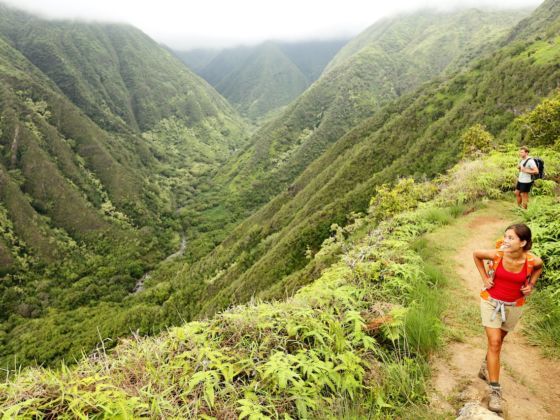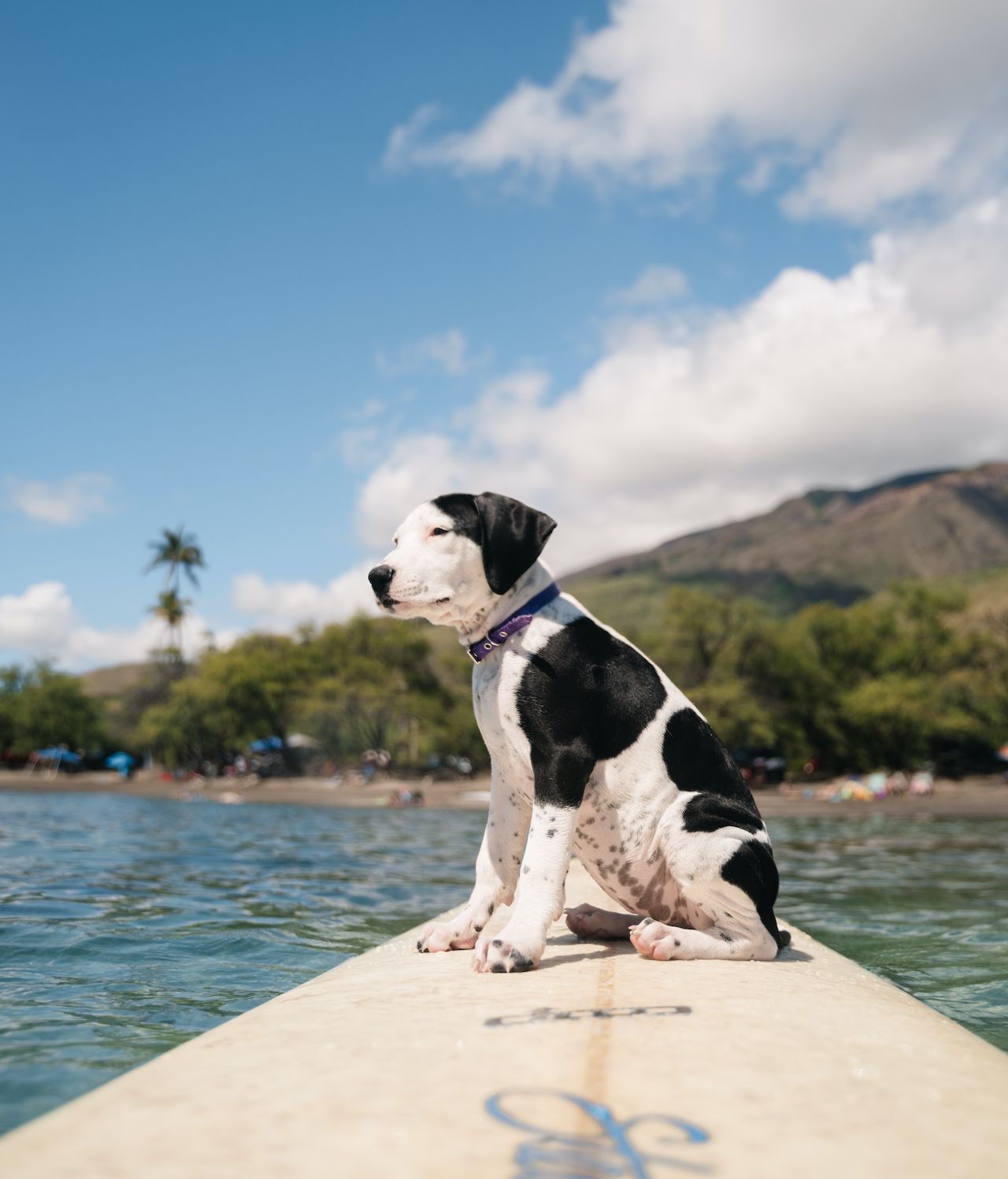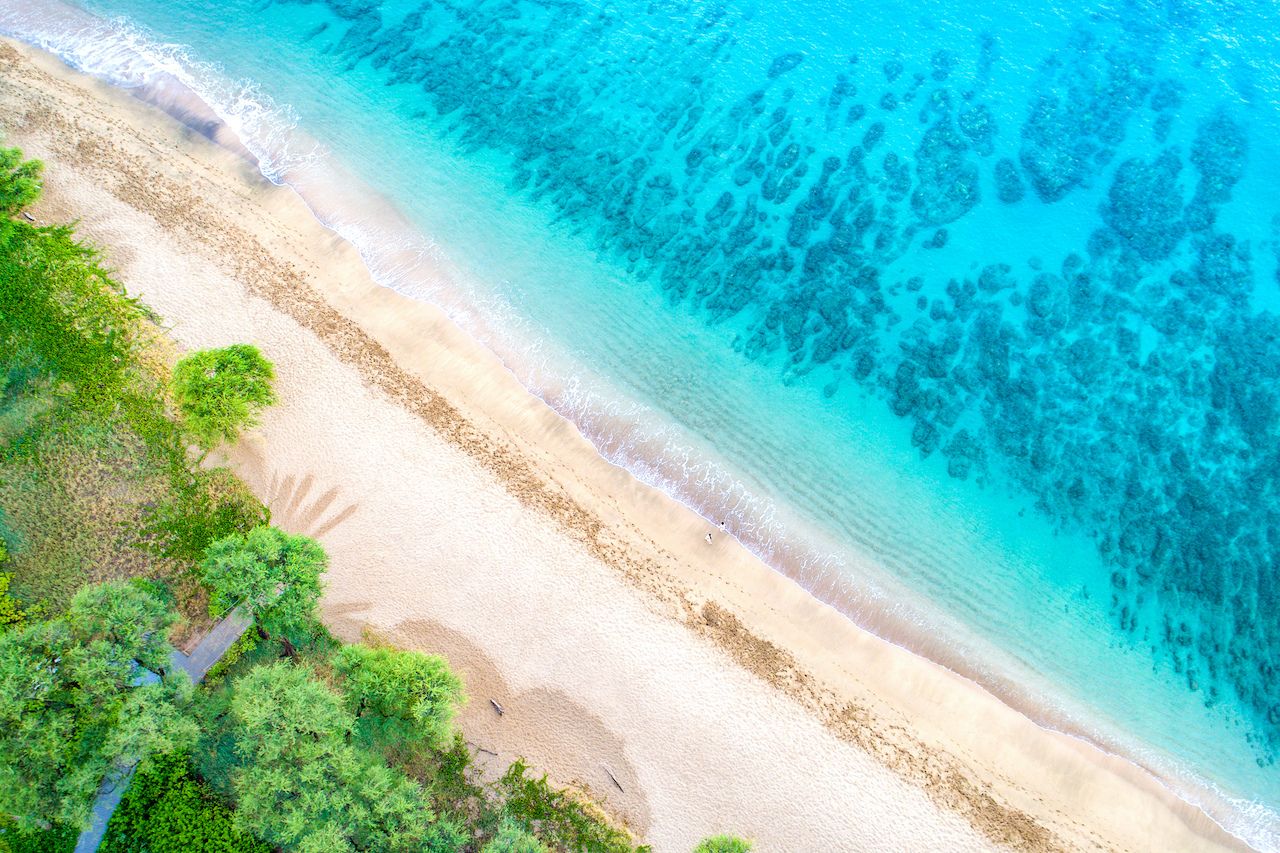Vacationing on Maui is certainly good for the soul. You’ll be exploring bamboo forests, dining at epic restaurants, and strolling miles of coastline, no doubt. But what if your Valley Isle getaway also included time spent lending a hand? Chances are, it’ll make your days on Maui that much more memorable.
To that end, we’ve rounded up some volunteering options to consider. Each makes for a great way to get to know the community, learn about Hawaiian culture — all while being surrounded by Maui’s natural beauty — and return home knowing you’ve done some good. A win-win-win.
1. Hanging out with a furry friend
Daily dips in the sea, stand-up paddleboarding sessions, and morning walks are that much better with a furry companion. The Maui Humane Society Beach Buddies program gives you the chance to take a shelter dog out for a full day of fun. Make a pup’s day — and, let’s be honest, yours too — by tackling a hiking trail or heading to a dog-friendly restaurant. All you have to do is sign up ahead of time on the Maui Humane Society website, and you’ll be paired with a dog based on your dog-handling experience and desired activity level.
Your pet for the day will be bathed and ready for adventure and will come with a backpack of supplies — including a water bottle, bowl, towel, treats, poop bags, and a seatbelt. There’s no charge for the Beach Buddies program, but a donation of at least $25 helps keep the program going strong.
2. Bringing your horticulture skills to a national park

Photo: Shutterstock/Evan Austen
Haleakala National Park, named for the impressive Haleakala volcano, provides quite the backdrop for volunteer work. Once a month, you can volunteer with Friends of Haleakala National Park to care for a wide array of extremely rare native plants, like the ahinahina, or silversword; cyanea, found deep in Kipahulu Forest Reserve; and a rare mintless mint that grows in Haleakala Crater.
“Many species evolved in isolation here in Hawaii to become unique species,” says volunteer Maggie Sutrov. “Haleakala is even more unique because it’s the summit of the island. These plants are a part of the wonder of this place; they evolved to live here and nowhere else.”
If you can’t make it to the park, you can still help protect an endangered species and its habitat: Consider adopting a Nene, the state bird of Hawaii. Though once extinct from Maui, it was re-introduced in the 1960s, and there are now about 1,800 wild Nene birds throughout the islands.
For something more physically demanding, sign up for a three-day service trip into the crater, where you’ll spend five hours a day helping out with things like weed pulling, trail cleaning, cabin cleaning, and bird identification.
“Haleakala has five overnight cabins located three miles, seven miles, and nine miles down inside the crater, so this gives people the chance to experience the majestic volcanic features, bird and plant life, and dark starry nights,” says another volunteer, Joani Morris. “To get out on the last day, the gain in elevation on the Switchbacks Trail (Halemauu) is considerable, but all in all people will experience one of the best wilderness experiences of their lives,” she explains. “We always learn something new as we spot native birds and massive koa trees. Plus, there’s the musical rainstorms pounding on the cabin roof and shooting stars; I could go on and on.”
3. Lending a hand at a beach cleanup
Hawaiian Paddle Sports hosts beach cleanups and other opportunities to give back each month. The company strongly believes in the concept of kuleana: If you’re fortunate enough to enjoy Maui as your home or vacation destination, then it’s important to accept the kuleana (responsibility) to take care of the island. Check the website for upcoming dates — and for additional beach-cleanup events, Surfrider Maui and Sustainable Coastlines Hawaii are other options.
“We hope to leave each place we visit better than we found it and to share this mission with our guests,” explains Timothy Lara, owner of Hawaiian Paddle Sports. “Kuleana is something our guests can carry with them wherever they go, even in their own backyards.”
4. Protecting a gorgeous coastal refuge
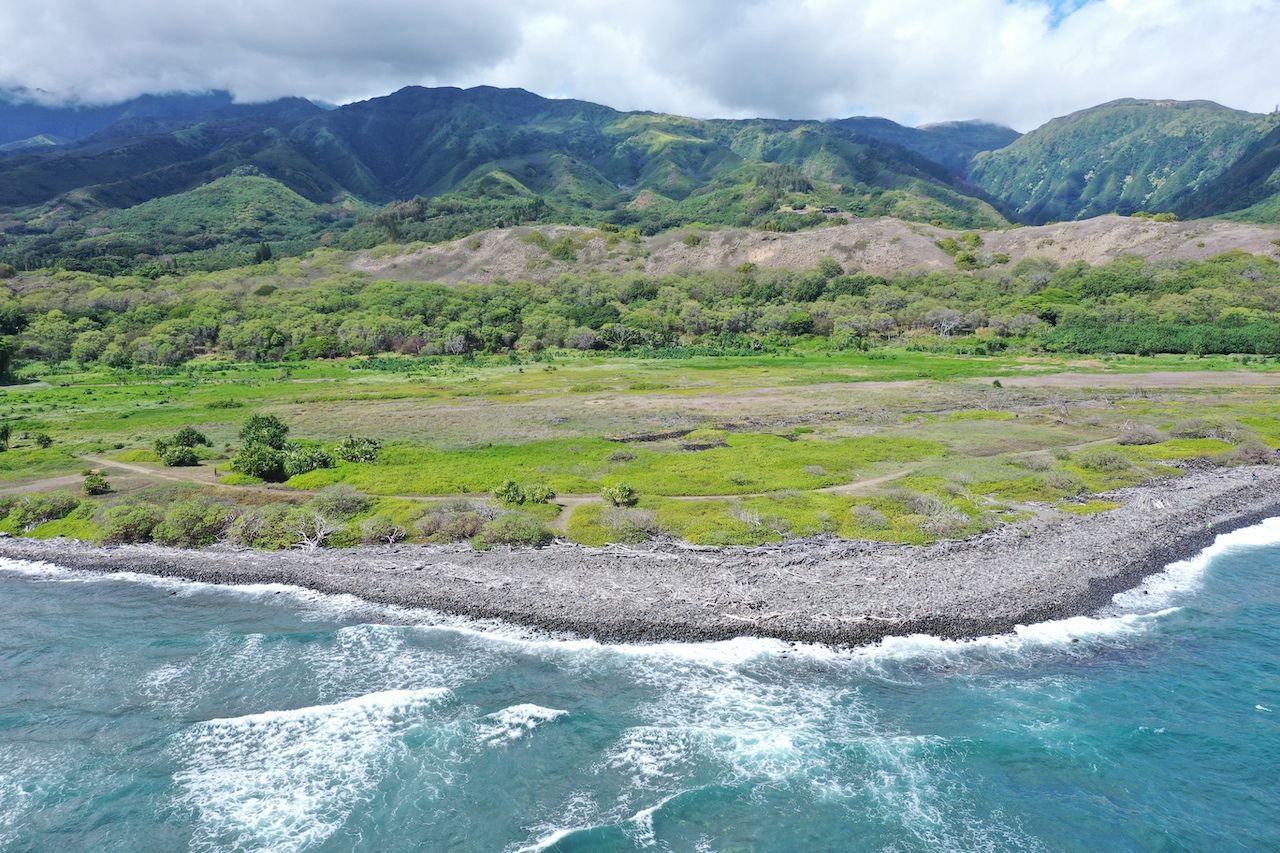
Photo: Hawaii Islands Land Trust
The Hawaiian Islands Land Trust offers plenty of volunteer-on-vacation opportunities, like their ongoing effort in Wailuku. Here, volunteers spend the morning at Waihee Coastal Dunes and Wetlands Refuge, a gorgeous stretch of coast rich in Hawaiian history. Your job: to remove invasive plant species and clear out brush and weeds, which helps restore native wildlife habitat and preserve significant cultural sites. The area was once home to two thriving Hawaiian villages, an inland fishpond, and several Hawaiian temples known as heiau.
While here, keep your eyes peeled for birds! Native species like the aeo (stilt) and alae keokeo (coot) call the refuge home. Added bonus: If you’re lucky, you may spot nesting green sea turtles or even endangered Hawaiian monk seals.
5. Taking part in a coral reef survey
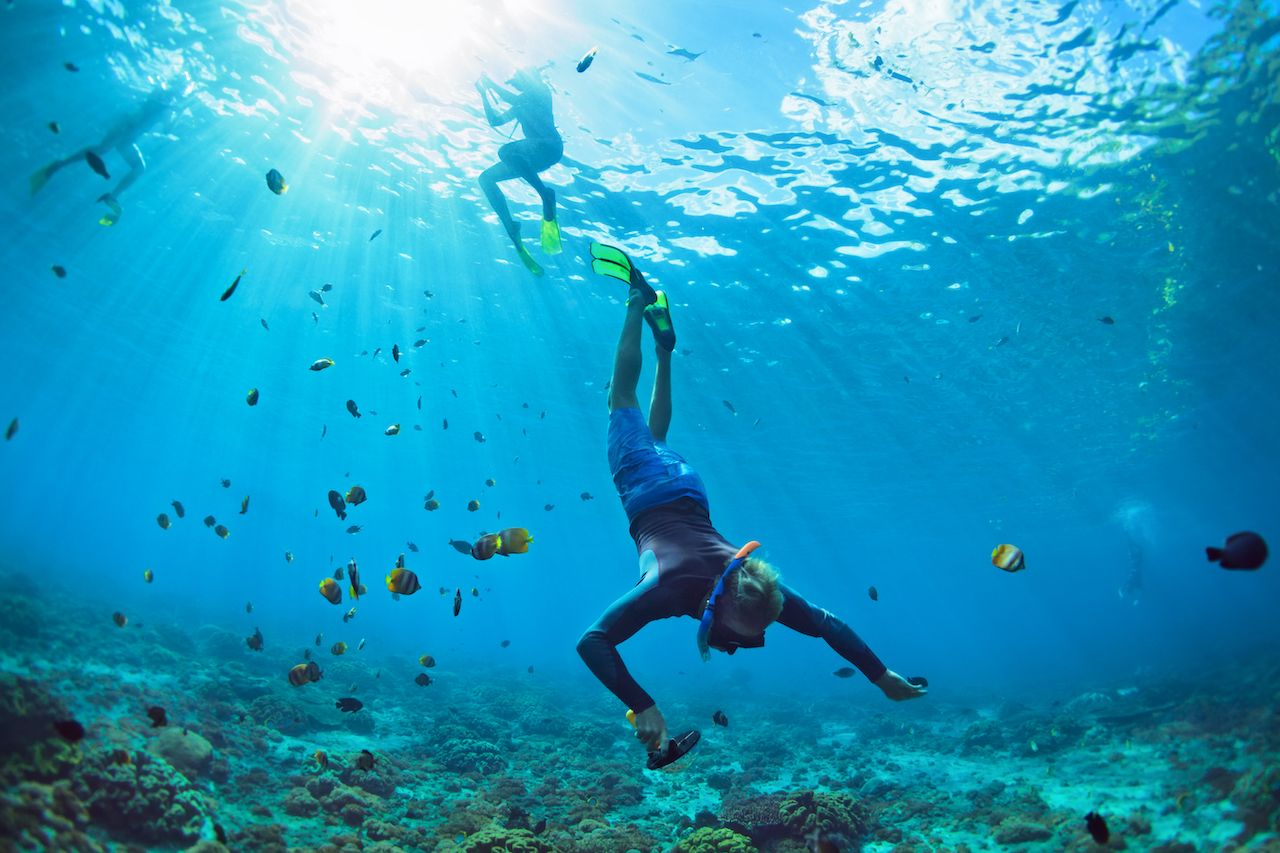
Photo: Shutterstock/Denis Moskvinov
If you’d prefer to get out on the water, consider being a citizen scientist for a few hours. Polanui Hiu, a group working to address the decline of Maui’s marine resources, conducts reef surveys throughout the year. Volunteers suit up in snorkel gear and swim near shore with data sheets and clipboards to collect info crucial for detecting changes in reef-fish populations. During the snorkel session, you’ll be on the lookout for seven species of fish that are ono (ones that people like to eat). For even more volunteering options, visit the Hawaiian Paddle Sports website.
There’s a Hawaiian saying that sums it up pretty well: aohe hana nui ke alu ia. It means no task is too big when done by all. With this spirit in mind, delve into nature, but please also lend a hand while you’re at it. Friendly howzits (a local way of greeting) and shakas will likely follow.

